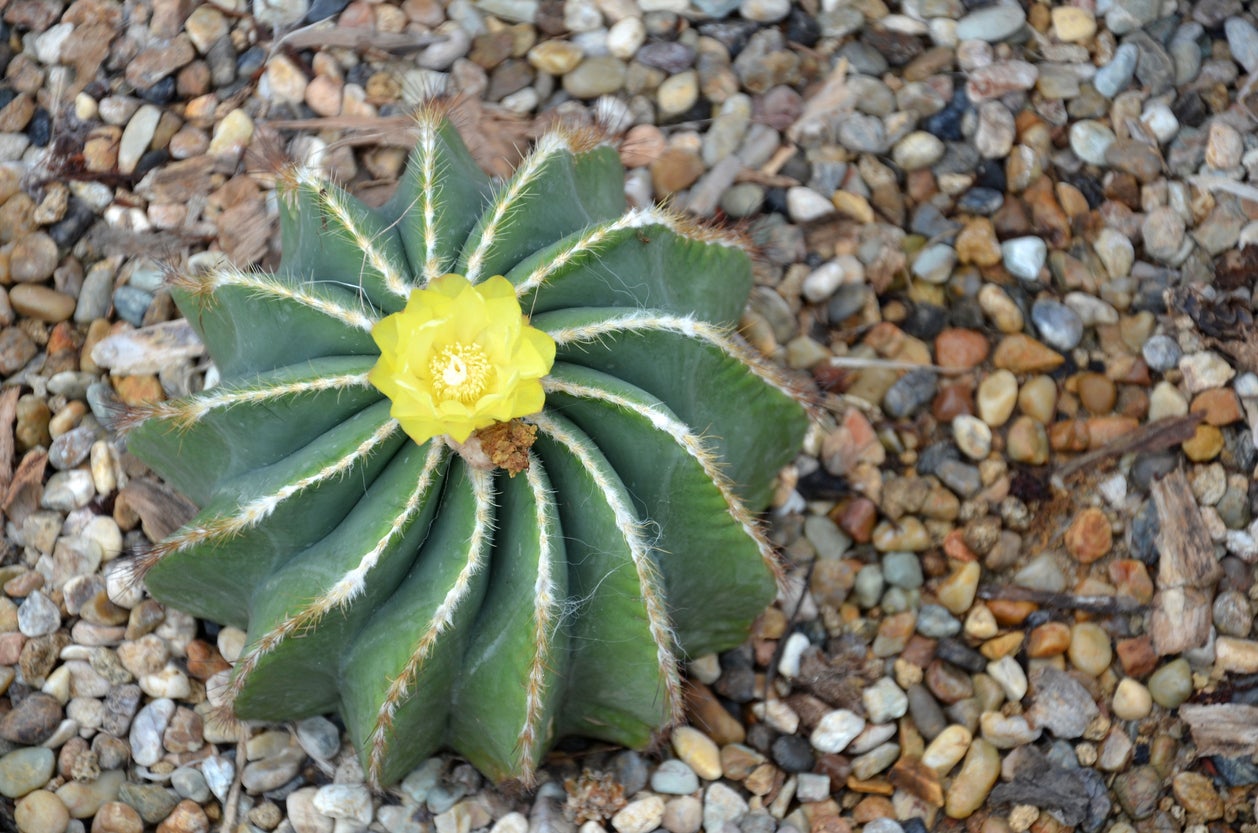Balloon Cactus Info: How To Grow Balloon Cactus Plants


One of the nicest examples of a globe cactus is Notocactus magnificus. It is also known as the balloon cactus due to its round shape. What is a balloon cactus? The plant is classed in the genus Parodia, a group of plants primarily native to Peru, Brazil, and Uruguay. These are sun lovers that should be kept moderately moist in most seasons but dry in winter. Learn some tips from us on how to grow balloon cactus.
Balloon Cactus Info
Balloon cactus is not a very common plant, but some retailers carry the succulents and the seeds are widely available on the internet. As one of the low growing, chubby, round types of cactus, it is adorable and well worth including in your cactus collection. Like many of the desert varieties, balloon cactus cannot tolerate frost and, in most climes, is suited only as a houseplant.
If you aren't a collector, you may wonder, “what is a balloon cactus.” You would recognize where it gets its name if you saw the plant. Pleasantly plump might describe this succulent. It grows fairly quickly and will eventually achieve 12 inches in height (31 cm.) in a container, but wild species can get 3 feet tall (91 cm.).
An obvious globose form with blue-green skin and deep ridges with both woolly and erect spines, under the right conditions the plant will produce rather large, bright yellow flowers. Unfortunately, the plant is threatened in its native regions of Brazil, Uruguay, Paraguay, and Argentina.
How to Grow Balloon Cactus
This plant prefers desert-like conditions, and the soil and site should mimic those environmental experiences. Use a good cactus mix or make your own with half top soil and half horticultural sand. You can also use regular potting soil halved with sand, pebble, and other gritty material.
This cactus is hardy to USDA zone 9 only, so most gardeners will need to grow this plant indoors and move outside just for summer.
Select a well-draining pot. Place the plant where it receives six to eight hours of sun per day but has some protection from midday heat. Use pebbles as a mulch to prevent moisture loss and keep the soil cool.
Sign up for the Gardening Know How newsletter today and receive a free copy of our e-book "How to Grow Delicious Tomatoes".
Balloon Cactus Care
Contrary to many gardener’s beliefs, a desert cactus does need water. In their native habitat, they get most of it during the rainy season and store moisture in the body. In cultivation, we must copy such conditions for a happy plant.
Water deeply when the soil is dry to the touch when you insert a finger down into the soil. In the winter, provide only spare moisture once per month if necessary. The most common problem with such plants is root rot from too much moisture.
Few pests will plague the plant but watch for mealybugs and certain boring insects. Repot the cactus every few years. Balloon cactus prefers a container only a bit larger than its diameter. This is an easy plant to grow and will provide you with years of maintenance free delight.

Bonnie Grant is a professional landscaper with a Certification in Urban Gardening. She has been gardening and writing for 15 years. A former professional chef, she has a passion for edible landscaping.